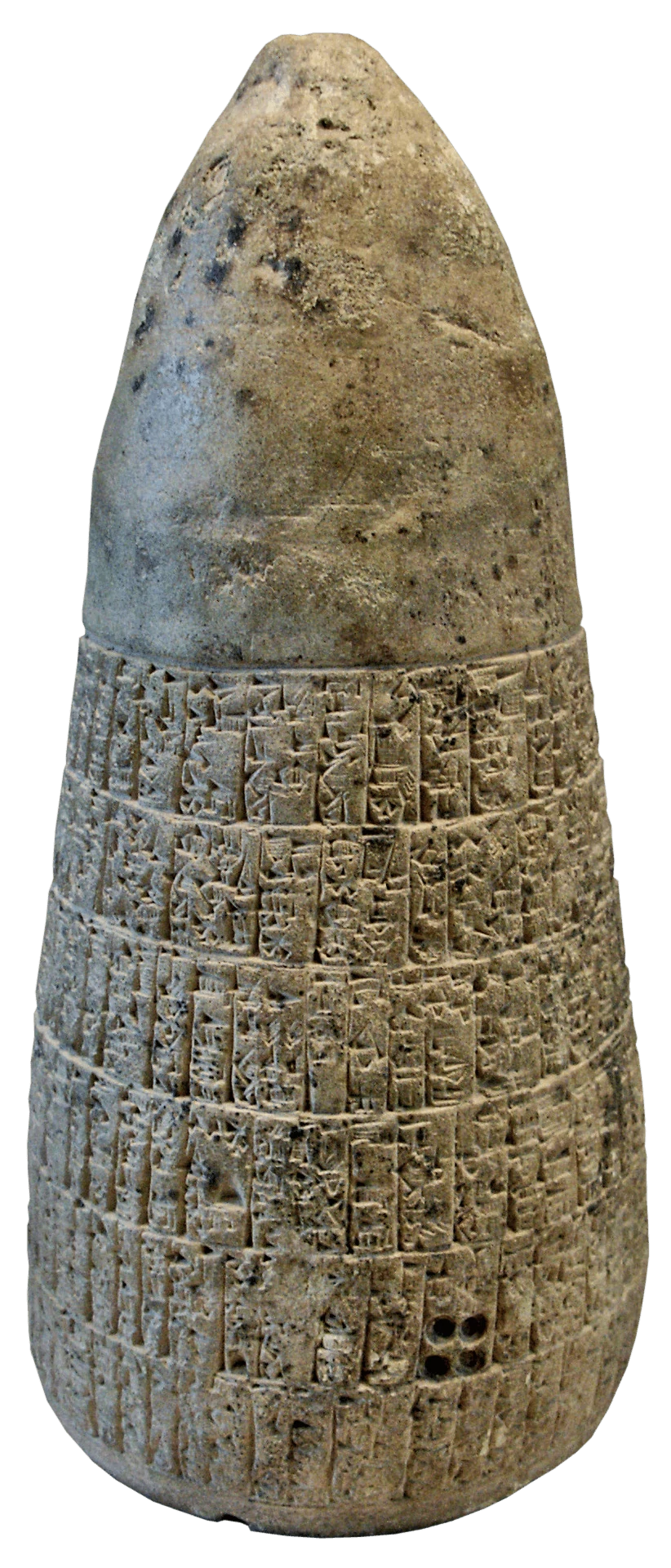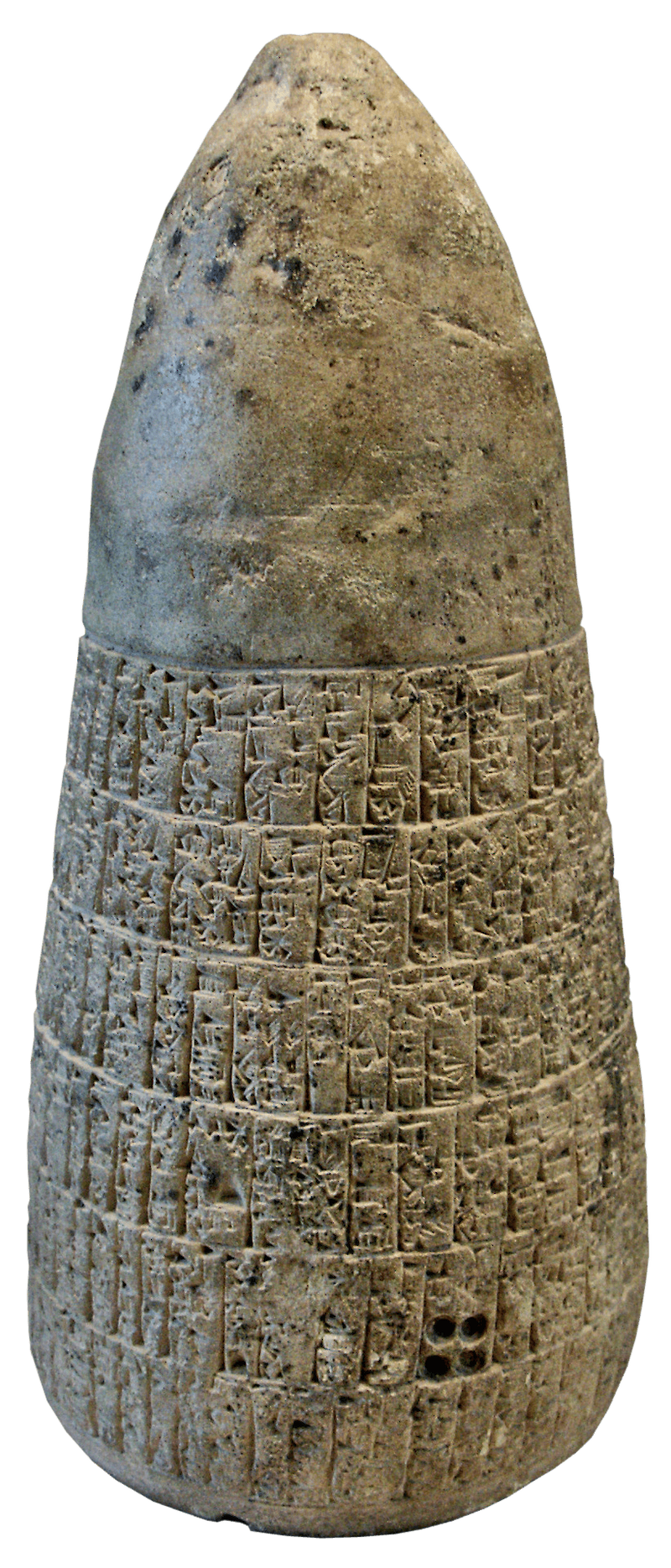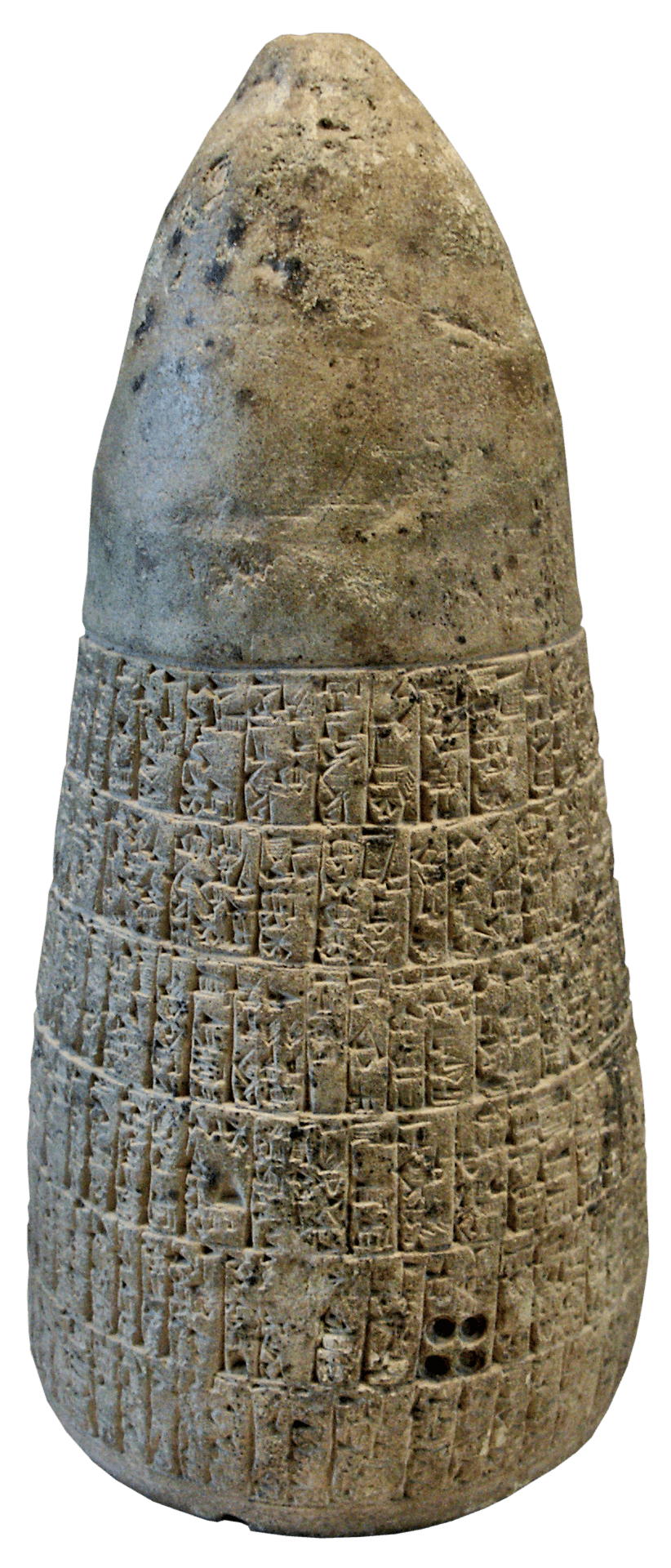


Created by the court historian of King Entemena, this terracotta cone describes the generations-long struggle over land and the Tigris and Euphrates canal. The king’s archivist took a historian’s approach to the contention between the cities of Lagash and Umma, telling the story from its beginning in approximately 2600 BC, when Mesalim, king of Kish ruled over the whole of Sumeria. The people of Umma had ignored the alliance treaty over the canal for three generations; it was Enmetena who settled the dispute and had the canal rebuilt, pleading his case before Enlil, the great god of Sumeria, to establish his right. The text ends with curses on “the man from Umma” who “would dare cross the border-embankment.” Though the narrative is far from objective, it describes what some consider the first legal document in recorded history.
An excerpt from the cone reads: “Enlil, king of all countries and father of all gods marked out the border in firm terms.... Mesalim, the king of Kish, measured it with the surveying chain, (and) erected a stele there.... In vain, Enmetena, the prince of Lagash, sent messages to Ila about this embankment. Ila, the prince of Umma, who is a land thief and a vituperator, declared: “The border-embankment is mine.”
